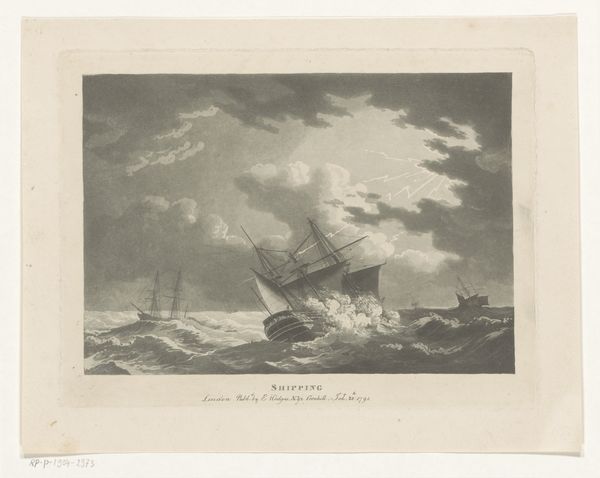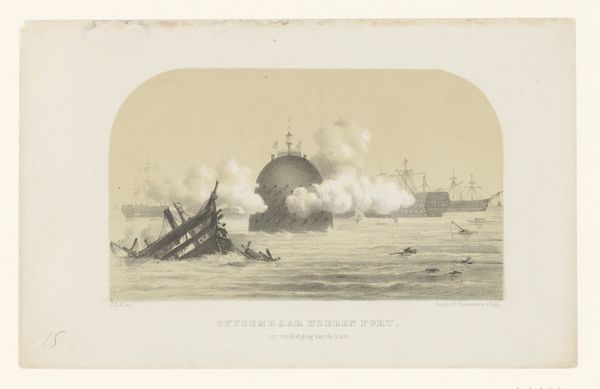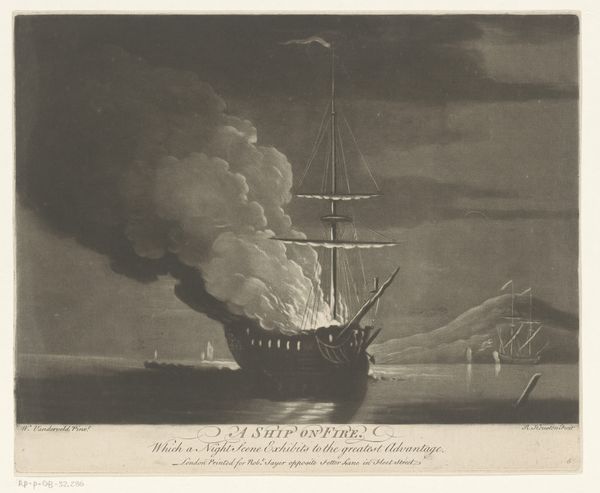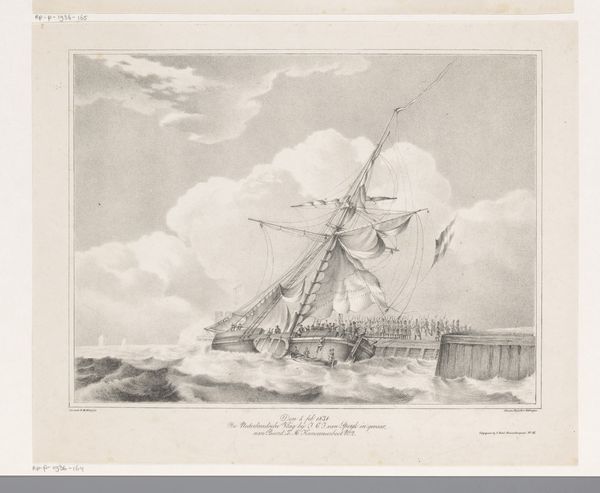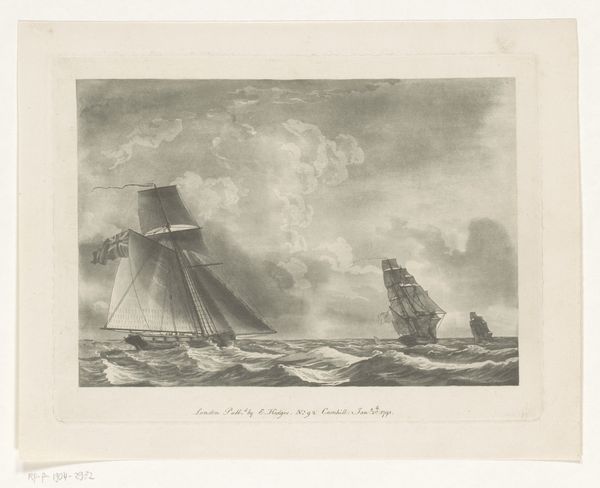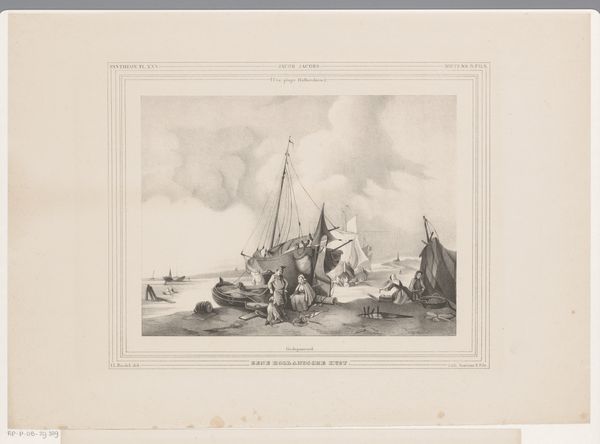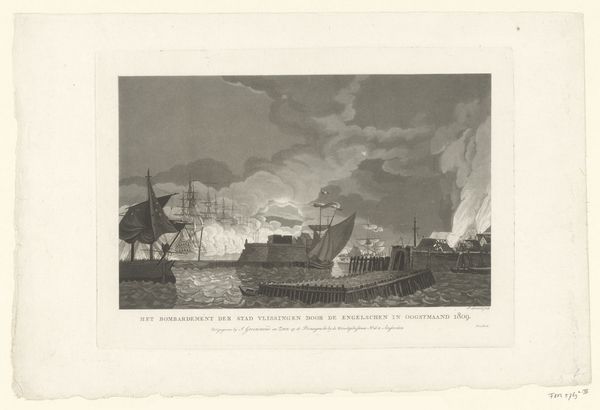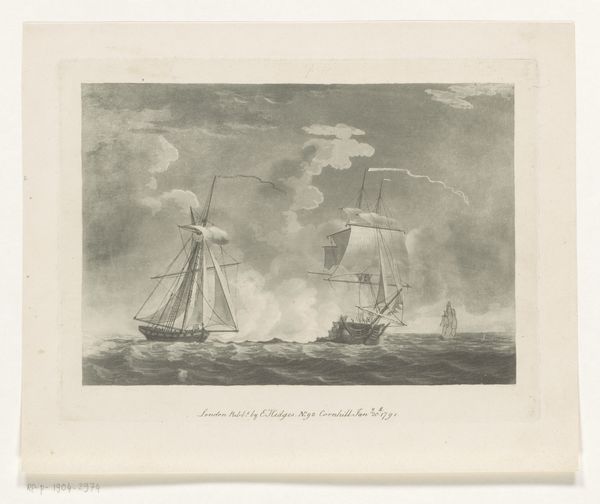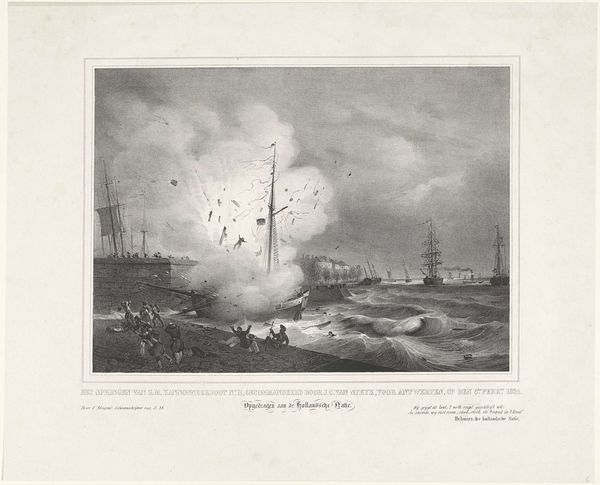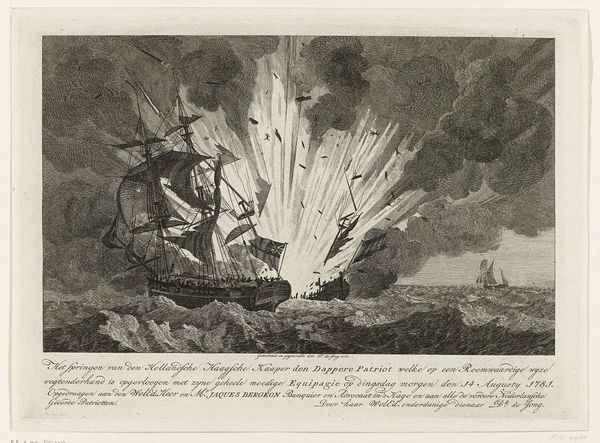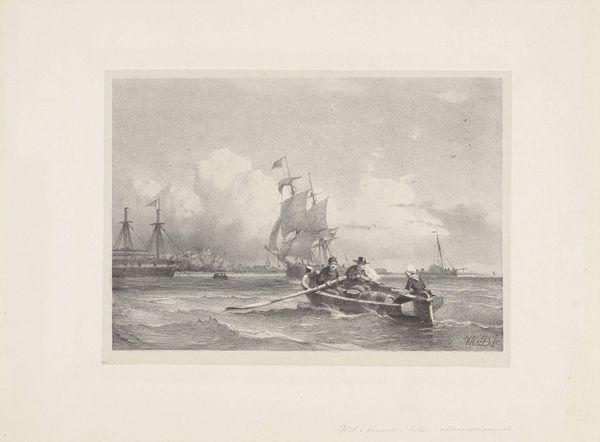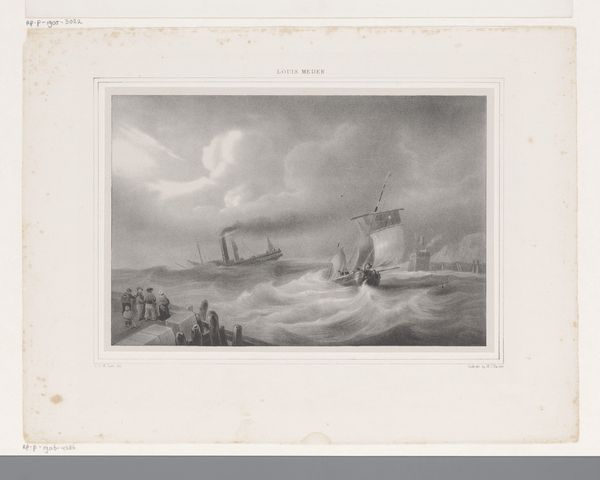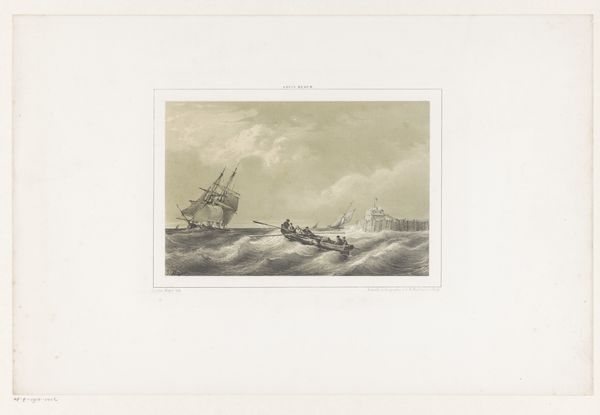
print, engraving
#
narrative-art
# print
#
landscape
#
romanticism
#
cityscape
#
history-painting
#
engraving
Dimensions: height 335 mm, width 270 mm
Copyright: Rijks Museum: Open Domain
Curator: Before us, we see Pieter le Comte’s 1831 engraving, “The Ship of Commander Van Speijk Exploding,” which currently resides in the Rijksmuseum. It’s quite a dramatic image. Editor: Indeed. My immediate impression is one of chaos – a visual maelstrom. The composition is so dynamic, with the exploding ship positioned off-center, almost fractured, really conveying the violence of the event. Curator: It does capture a pivotal moment in Dutch history, doesn’t it? Commander Van Speijk, rather than surrender his ship to Belgian revolutionaries, chose to detonate its powder magazine. This print immortalizes that act of nationalistic fervor. The landscape, almost secondary, heightens the sense of tragedy. Editor: But consider the cloud formations! They mimic the explosion, echoing its form and adding to the overall sense of turbulence. And the way the engraver uses light and shadow...see how the dark waves contrast with the bright blast? It emphasizes the raw energy released in that instant. Curator: Precisely! This image became deeply ingrained in the Dutch national consciousness, utilized extensively to galvanize patriotic sentiment in subsequent decades. Le Comte’s print served a very public, political function, didn’t it? Editor: Absolutely. It also relies on symbolic contrast, between a hard, built stone city and a storm ravaged, explosive end of a wooden boat and life. This composition helps frame our reading of the event and provides a strong visual guide that makes us feel loss and triumph. Curator: Without images like these, such stories risk fading into the fog of history, especially given that it was engraved and reproduced widely, becoming iconic as well as propaganda. Editor: Yes, that reproducibility only amplified the formal message of Romantic-era artistic language being one of drama and visual energy. The formal elements truly are complicit to historical representation. It is the chaos that truly makes it, and sells it. Curator: Well, this piece makes it abundantly clear just how powerful visual media can be in shaping a nation's narrative and a heroic narrative at that. Editor: Agreed, examining the visual choices enhances our awareness of historical narratives that this striking print helped craft.
Comments
No comments
Be the first to comment and join the conversation on the ultimate creative platform.
